When I wanted to date my latest Purdey, it was easy. I called Purdey and asked archivist Nick Harlow to look it up in the book, by serial number. Sure enough, he was able to tell me everything I wanted to know, including for whom it was made, when and what its original specifications were.
With many guns it isn’t so easy. While Purdey has been in business without interruption, since founded, most gunmakers existed only for the working life of the man involved, or perhaps for two or three generations. Business closure, economic disruption, re-development and war all played a part in losing the records that would tell us the story of our guns.
However, all is not lost. Even if you find a gun from a maker whose records have long since vanished, it is still possible to discover quite a lot about it and when it was made. Here we will show you how.
As a subject gun, we can consider this; a 12-bore hammer gun by W. Thorn.
Indicators of its date of manufacture can be deduced from several areas of the gun:
The Rib. The maker’s name and address are often found on the rib. Because most firms moved around every few years, the address changed with the move. Records indicating the dates at which a maker was based at an address give a window within which the gun must have been made.
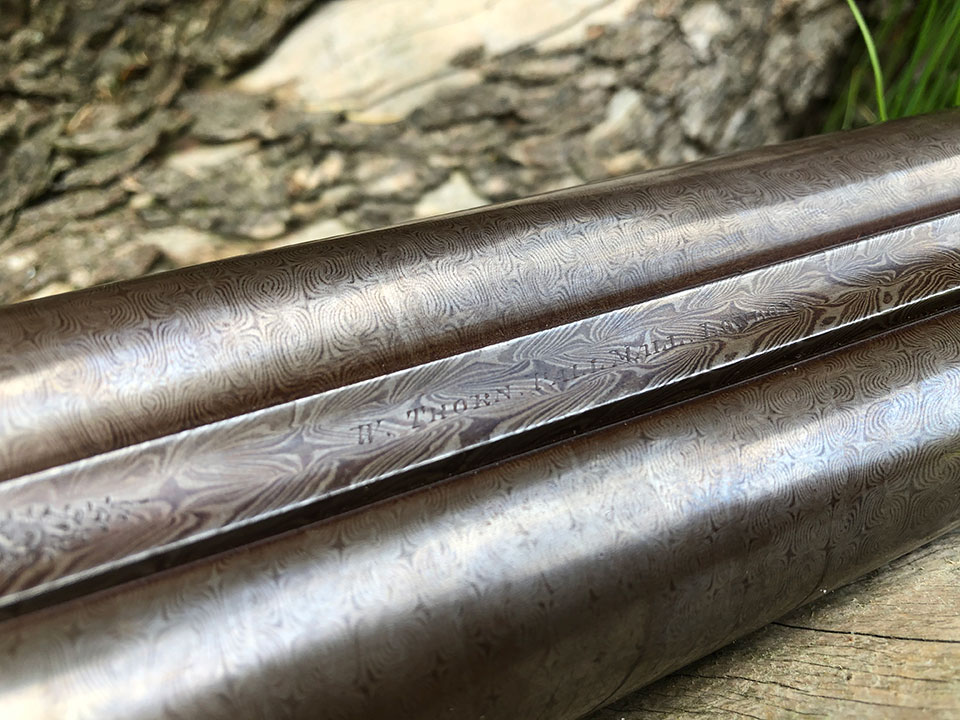
The Operating Mechanism. Because guns were being improved all the time in the 19th century, operating mechanisms were introduced, patented and adopted. The patent filing of a new mechanism provides a date before which the gun could not have been made. Sometimes a patent name and use number is stamped on the action, ejector patents are sometimes stamped on the forend iron.
Choke. If the barrels are choked, it post-dates 1875, as before that choke was not properly understood or applied to guns in Britain.
The Name. As a company grew or changed, so did the style of the name on the locks, often starting with just a single name or christian and surnames, like ‘John Smith’ later ‘John Smith & Son’ or ‘John Smith Ltd’ or ‘John Smith & Co.’ etc. When the style changed provides another date the gun cannot pre-date.
Proof Marks. Proof marks from both London and Birmingham proof houses were, and are, regularly updated to meet the changing needs of the gun trade. The introduction of smokeless powders, choke boring, sleeving, steel shot etc each required new Rules of Proof to cover the new demands. The proof marks on the gun provide a window pertaining to the life-span of the Rules of Proof in force when it was made.
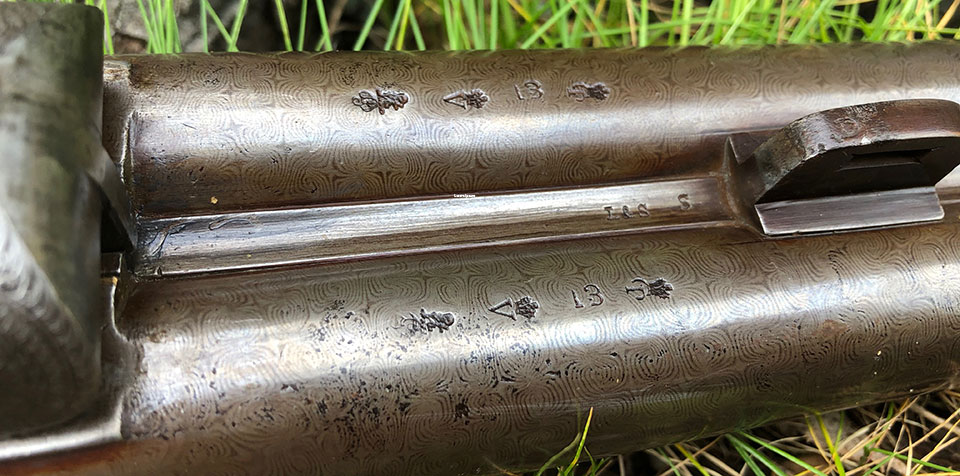
The Serial Number. Most guns have one but not all. Serial numbers can date a gun exactly if the gunmaker’s records are in tact and well kept. Even if they are not, comparing one serial number with another on a gun of which the date is known helps narrow the likely year of manufacture still further.
The Original Owner. If the gun was made for someone known, of can be identified by an engraving or a monogram on the oval or case lid, that person’s life-span can be looked up and will provide help with dating the gun.
Now you know where to look, you will need to know how to understand what you see. For that you will need some books.
Rules of Proof. These are available from the Birmingham Proof House. The Rules are staged into the year in which each set was enacted and shows you the stamps then used. Compare the words and images with the stamps on your barrel flats. A consolidated version is tabulated in my book ‘Vintage Guns’, for ease of reference.
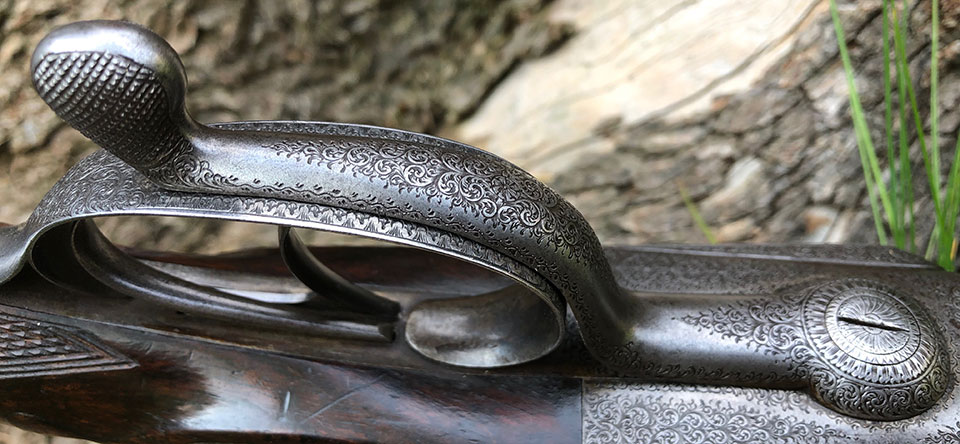
British Gunmakers by Nigel Brown (3 volumes). Available to order from Coch-y-Bondhu Books). This will probably list the gunmaker whose name is on the locks and will tell you what addresses he worked from and when (as far as has yet been discovered). This will help you un-lock the dating value of the style on the locks and the address on the rib.
The British Shotgun by Crudgington & Baker (3 volumes) Available to order from Coch-y-Bondhu Books). This lists and illustrates most of the patents that are likely to govern the mechanism of your gun. When you recognise the mechanism, you can match it to the patent date. This also extends to things like ejectors, forend catches, safety mechanisms, hammers and strikers etc.
Now we know what we are doing, let us apply the data to the gun under examination and see what we can find out.
Name: W. Thorn.
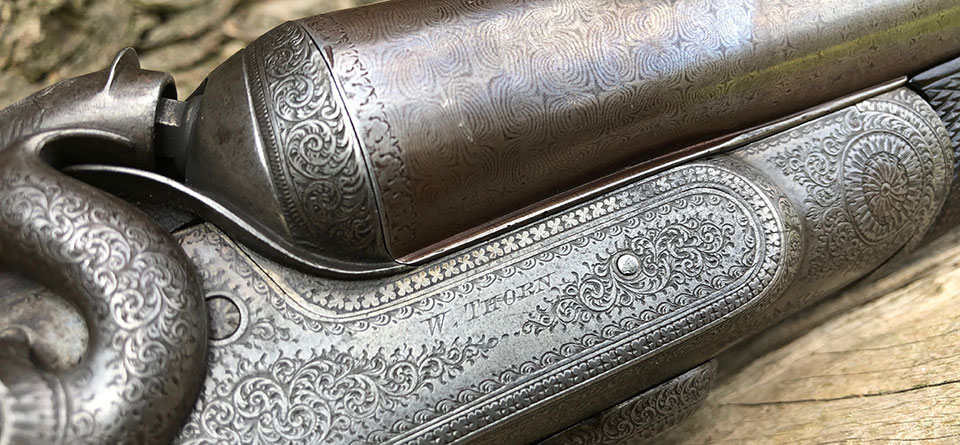
Address. Pall Mall, London. Nigel Brown notes (in Vol.1) William Thorn at 4 Pall Mall from 1874-1876. He adds (in Vol.3) that Thorn’s premises was taken over by Watson Bros in 1876.
Operating Mechanism: Jones rotary under-lever and screw-grip. Henry Jones patented this invention on September 7th 1859.
Locks: Non-rebounding bar locks. Stanton patented re-bound locks in 1867 and they were adopted quickly. The presence of non-rebound locks is usually a good indication of early 1870s manufacture, or earlier.
Forend Fastener: Wedge & Escutcheon. This is a hang-over from muzzle-loaders and was replaced with snap-action catches, (like the 1872 Anson patent push-rod) by most gunmakers in the mid-1870s.

Serial No: 104. Only two other Thorn guns are known; numbers 125 and 126, both dating from 1874/5. Small gunmakers rarely started guns from single digits and I’d make a guess Thorn started his production with number 100, so 104 might well be the fourth gun he sold from Pall Mall
Proof Marks: ‘GP’ with crown over. ‘V’ with crown over. ’13’ .’GP’ in italic with lion over. These are 1868 London black powder only proof marks. They were in force until 1875 but they only changed then with the introduction of marks denoting choke. Since the gun has no choke, these would not be used anyway, so it is possible the marks visible could have been used up to 1887.
So, there are multiple reference points her showing the gun cannot pre-date the Jones lever of 1859 or the Daw centre-fire patent of 1861. The proof marks and address indicate 1874 or 1875, as do the non-rebound locks and serial number. The whole look and style of the gun to a practiced eye indicates early-to mid 1870s, so none of this is a surprise.
By gathering and cross-referencing the various data points available on the Thorn, we can be pretty sure that it dates from 1874. Not a bad bit of detective work on a gun for which no records are extant, and something that any reader can replicate and start deducing the earliest and latest dates their gun may have been made between. Sometimes, when information is scant, that window may be a decade, more often, it can be narrowed down to three or four years or better.
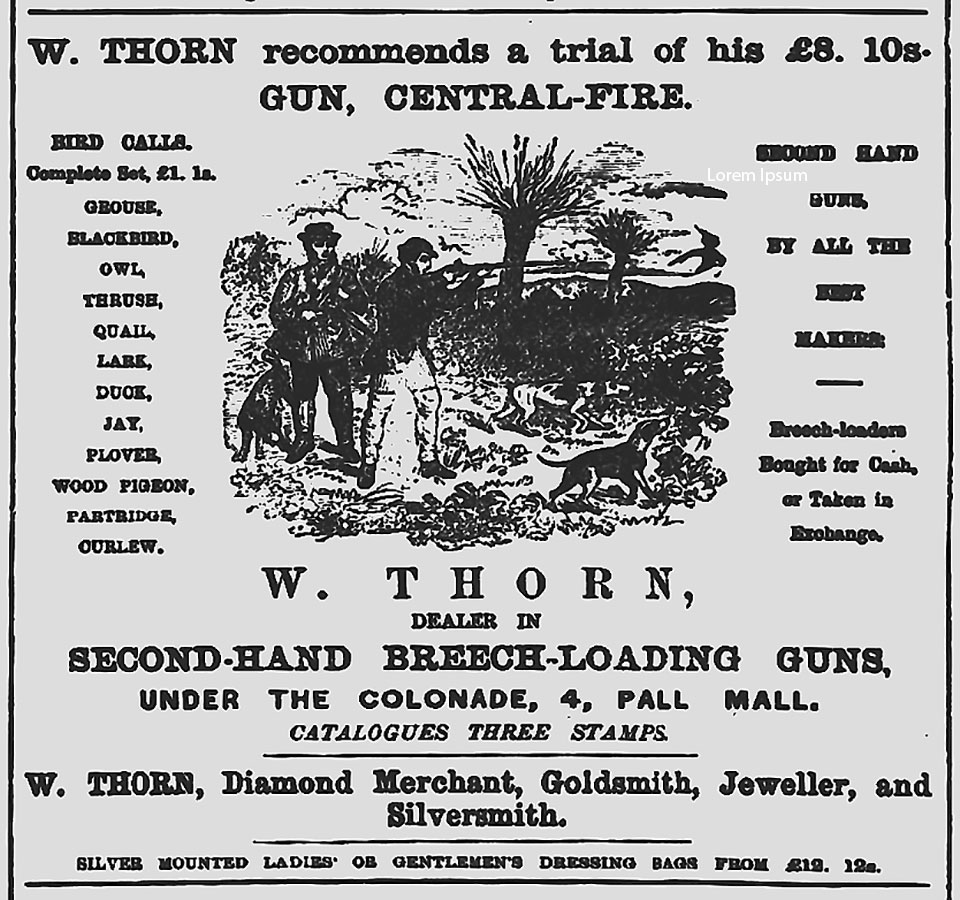
Published by Vintage Guns Ltd on



